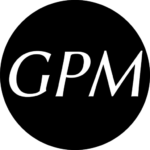On Crossing
Key Concepts from Writing Studies

Introduction
“Across” is a concept with myriad valences. Come across, cut across, get the point across. The words “cross” and “crossing” have even more associations. Cross-pollination, cross out, cross-contamination, crossing a line. In language and our culture, we are fascinated by boundaries and crossing points.

Crossing is powerful. It is relational: It brings things together, combines associatively. It is also transgressive: It shows us where lines have been drawn and invites us to change course. For Deleuze and Guattari (1987), crossing implies a kind of horizontal movement that contrasts with the linearity (one-dimensionality) of Western, modernist production. They describe assemblage as a form of crossing by bringing objects into surprising points of intersection through juxtaposition. Every point of crossing has at least two dimensions and invites plural engagements with the place where things meet.

In rhetoric, composition, and writing studies, the concept of crossing has been deployed in a variety of ways. It has enjoyed sustained popularity in the field’s recorded knowledge—the WAC Clearinghouse’s CompPile database returns nearly 2000 instances of the words “across” and “cross” in a search of titles for books and articles. But even when these terms are not explicitly named, crossing is present in so many of the discipline’s core inquiries, including:
- how writing conventions differ across disciplinary boundaries (writing across the curriculum) (Russell, 2002)
- how writing crosses and combines modes and technologies (multimodality/transmodality) (e.g., Shipka, 2016; Horner, Selfe, and Lockridge, 2015)
- how communication takes place across languages (translingualism) (Canagarajah, 2013)
- how writing forges connections across communities (Kells, 2007)
- how knowledge of writing transfers across contexts (Yancey, Robertson, & Taczak, 2014)
- how writing spans geographic areas (Berry, Hawisher, & Selfe, 2012; Reynolds, 2007; Cisneros, 2014)
Clearly, the words across and cross—as well as their cousin, the prefix trans—have been generative for writing scholars. It has become almost a cliché in the field to frame writing problems and initiatives as “Writing across [term of choice].” It has become our linking word de rigueur, used to express writing’s relationship to just about anything else. But despite its ubiquity in the titles of the discipline’s composed knowledge, scholars more often are writing around “acrossness” than about it—and this effortless, unreflective use carries risks. Crossing functions as a powerful metaphor in writing studies—or, as Burke (1966) would put it, a “terministic screen” (“screen” itself being a metaphor for crossing) that can “produce ‘implications’ or even ‘blindspots’ about writing that are more latent in the metaphoric terminology than in the objects of study themselves” (Alexander et al., 2020, p. 107).

So I want to ask: What does it mean to write across? After all, every act of writing is an act of crossing. Writing is a medium (like televisions, bodies, air, images)—literally, an in-betweenness that must be crossed to connect authors to audiences. Writing is also mediation, the activity of crossing—it connects persons, locations, temporalities, and concepts. The remainder of this essay attempts to pull together strands of research in writing studies and adjacent fields in an attempt to shed light on how the idea of composing across has been conceptualized by a wide range of research interests in the literature.
Methods of Crossing
Why “across” rather than “through,” “in,” “out of,” or even “against?” What does the spatial metaphor of crossing offer writing studies?
There are many ways scholars of writing have conceptualized crossing. The metaphor is extremely plastic and generative. Below are visual representations of some of the ways the metaphor has commonly been deployed.

Crossing boundaries implies recategorization and movement. It is a metaphor often used to describe the transgression of established norms or mobility and growth (such as in transfer studies).

Bridging metaphors place the emphasis on how crossing creates connection, such as when cultures come into contact or when scholars engage in cross-disciplinary collaborations.

Transcending is similar to boundary-crossing, but it suggests moving beyond boundaries entirely, rather than crossing into another bounded space. An example is the way translingualism purports to move beyond artificially bounded definitions of language.

Transitioning is crossing through time, or sometimes space, at a gradual rate. It emphasizes change, such as when a writing program transitions to a new curriculum and instructors must find ways to adapt to these changes.

Like bridging, intersections put two things into contact with each other, but this contact usually emphasizes contradictions or plural approaches.

Also similar to bridging, intertwining demonstrates the mutual inseparability of its connected parts. Multimodal and ecological views of writing often emphasize this kind of crossing.

Crossing (as in biological hybridization) creates intersections through overlaps. The space of overlap is not merely a combination of discrete parts but a novel entity.

An even more complex and expansive crossing metaphor than intertwining, where a new material is created from the weaving or assemblage of myriad strands. One example is code-meshing.
Crossing Points
Writing studies has explored composing across in a number of continually expanding directions. Explore below:
© Gabriel Morrison, 2021






